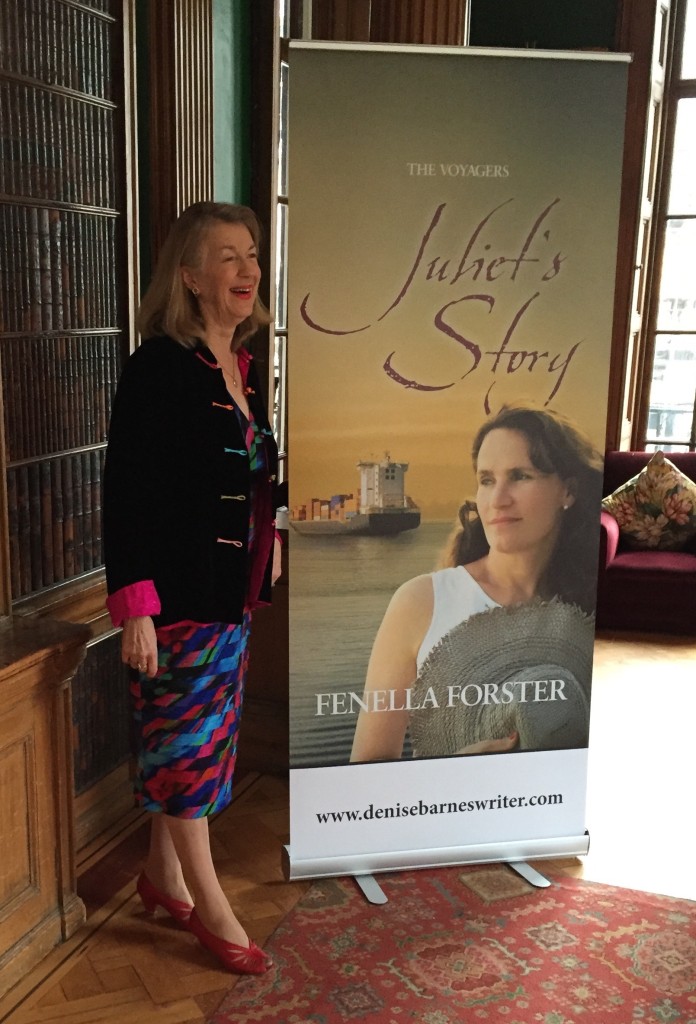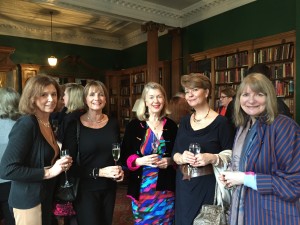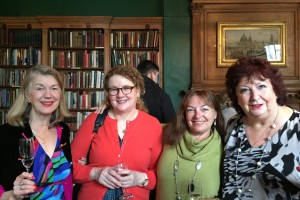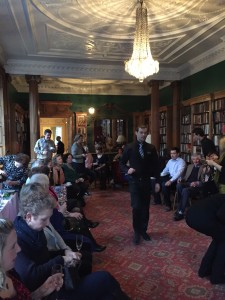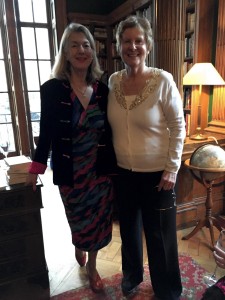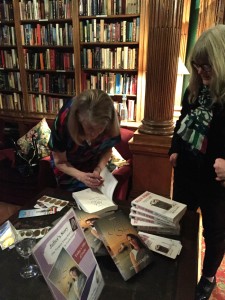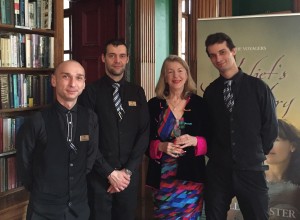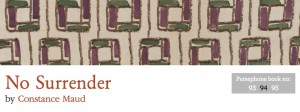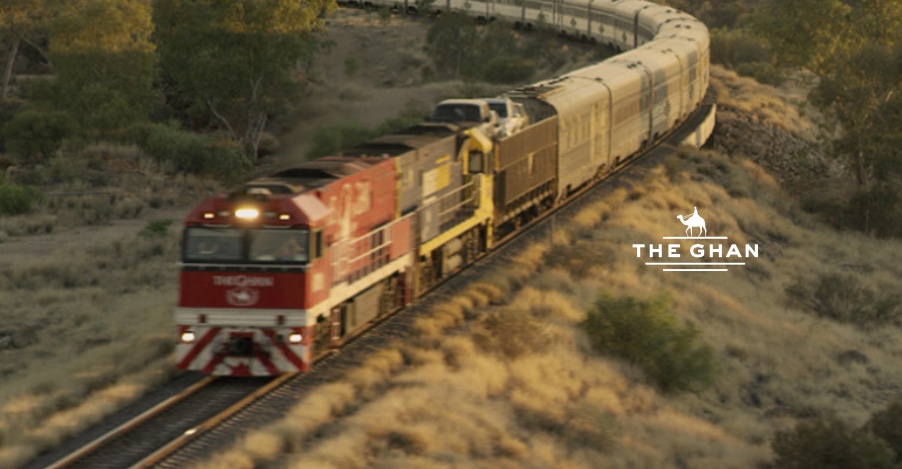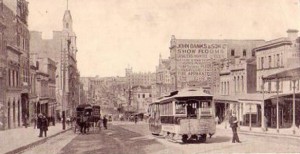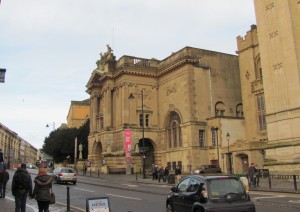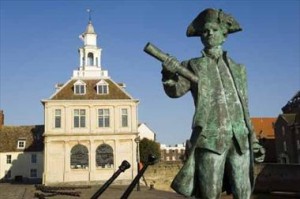 Juliet’s Story, Book 2 of The Voyagers trilogy, has been well and truly launched!
Juliet’s Story, Book 2 of The Voyagers trilogy, has been well and truly launched!
I’ve got into the habit of having two launches each time one of my books is published. One takes place at my club in Mayfair, the University Women’s Club, and the other more locally in the Tunbridge Wells area. Previously, I’ve arranged it in Waterstones but sadly, they are holding fewer book events these days. It’s such a shame as I love to attend book launches as well as give them.
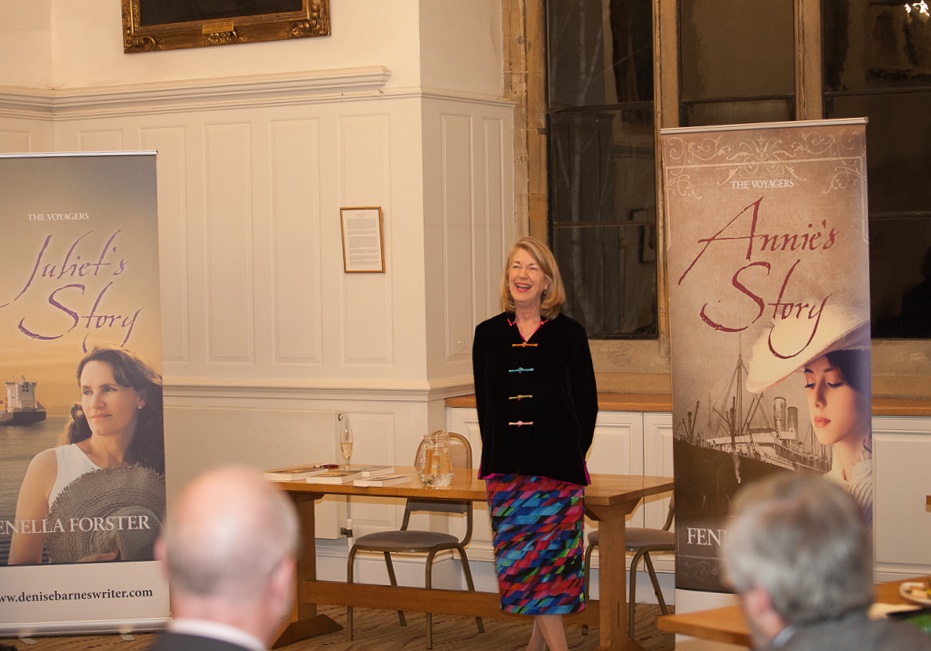 I attended a rather grand book launch at Tonbridge School last year – the author was David Lough, being interviewed on his latest biography: No More Champagne: Churchill and His Money.
I attended a rather grand book launch at Tonbridge School last year – the author was David Lough, being interviewed on his latest biography: No More Champagne: Churchill and His Money.
I was most impressed with the beautiful building, the smiling staff, the delicious canapés and the exceptional champagne. Churchill himself would definitely have approved! So I decided to hold my event there.
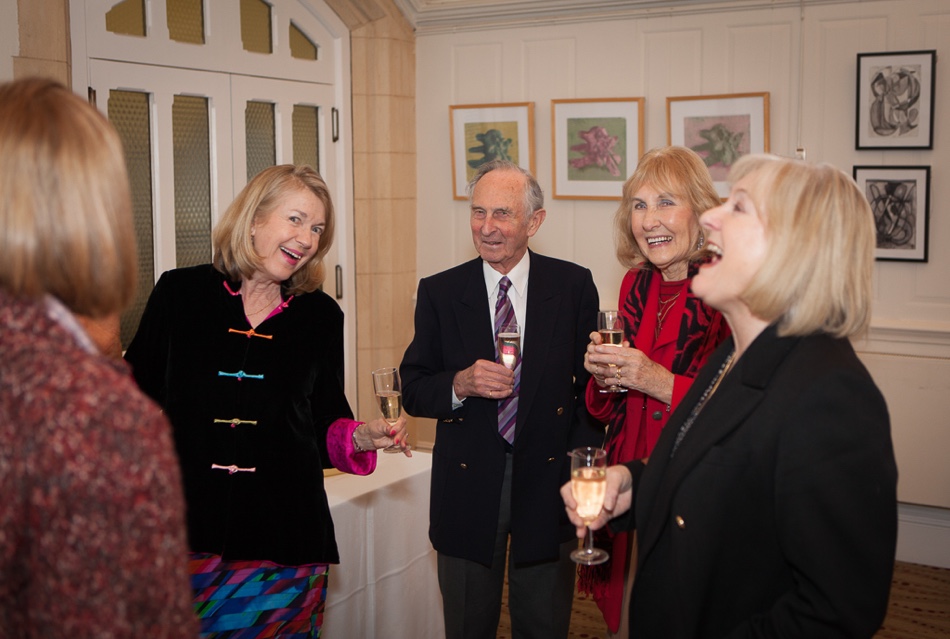 It was a perfect choice, and because it was a slightly different area, I had friends and acquaintances coming from Sevenoaks and Hildenborough as well as Tonbridge and Tunbridge Wells. Looking around at the 30 or so faces, half of them had never attended one of my launches. This is A Good Thing! At least eight folk bought Annie’s Story, Book 1 of the trilogy together with Juliet’s Story so they could catch up. I had put Annie’s banner up as well as Juliet’s, hoping this might happen.
It was a perfect choice, and because it was a slightly different area, I had friends and acquaintances coming from Sevenoaks and Hildenborough as well as Tonbridge and Tunbridge Wells. Looking around at the 30 or so faces, half of them had never attended one of my launches. This is A Good Thing! At least eight folk bought Annie’s Story, Book 1 of the trilogy together with Juliet’s Story so they could catch up. I had put Annie’s banner up as well as Juliet’s, hoping this might happen.
Marcus Warren proved to be a great photographer who managed to flatter me in most photographs, except one where he made me look 90 (I’m sure I don’t know how he did this – it must have taken all his ingenuity and photographic skill) instead of the bright young woman I really am! DELETE!
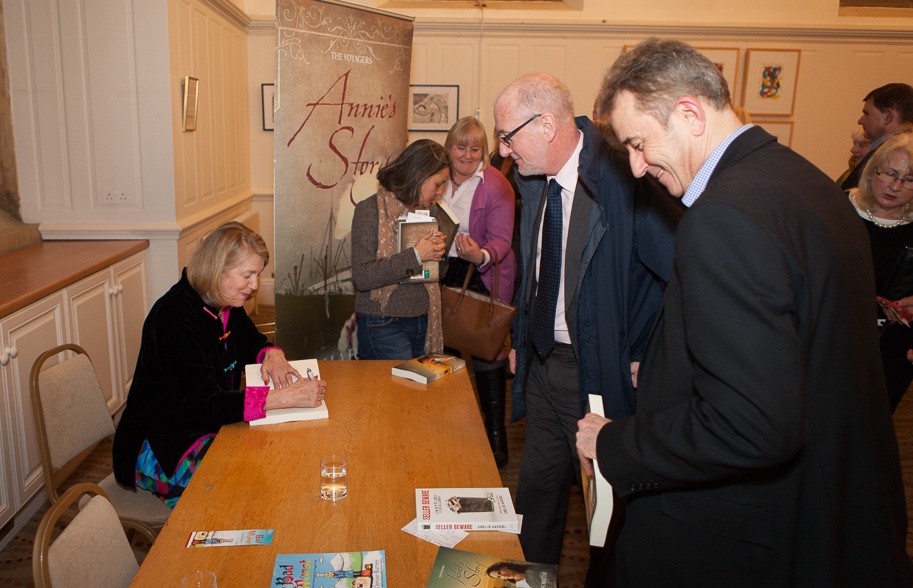 We all had a jolly time and everyone seemed to enjoy the evening and my talk. I must say, I loved the evening. Always think that’s a good sign if the host does.
We all had a jolly time and everyone seemed to enjoy the evening and my talk. I must say, I loved the evening. Always think that’s a good sign if the host does.
Roll on the next launch. Sadly, not until 2017 when Kitty’s Story, Book 3 of the trilogy will be out. Do hope to see you!
Juliet’s Story is available now from your local bookshop and from Amazon UK Amazon US Kobo


